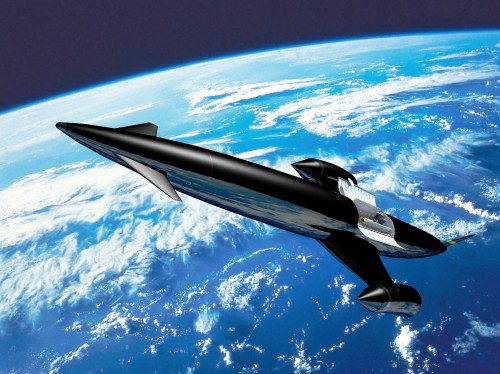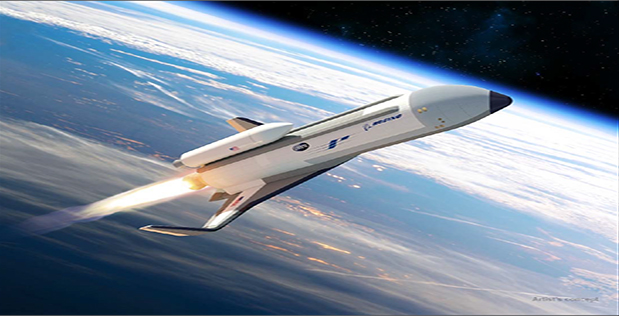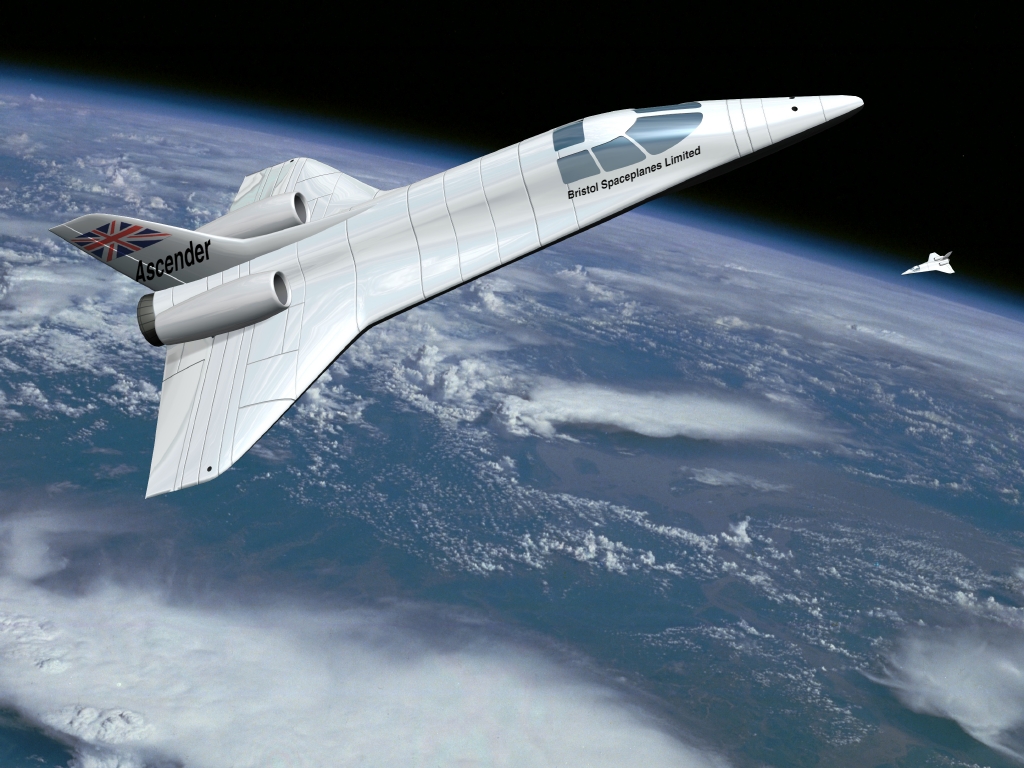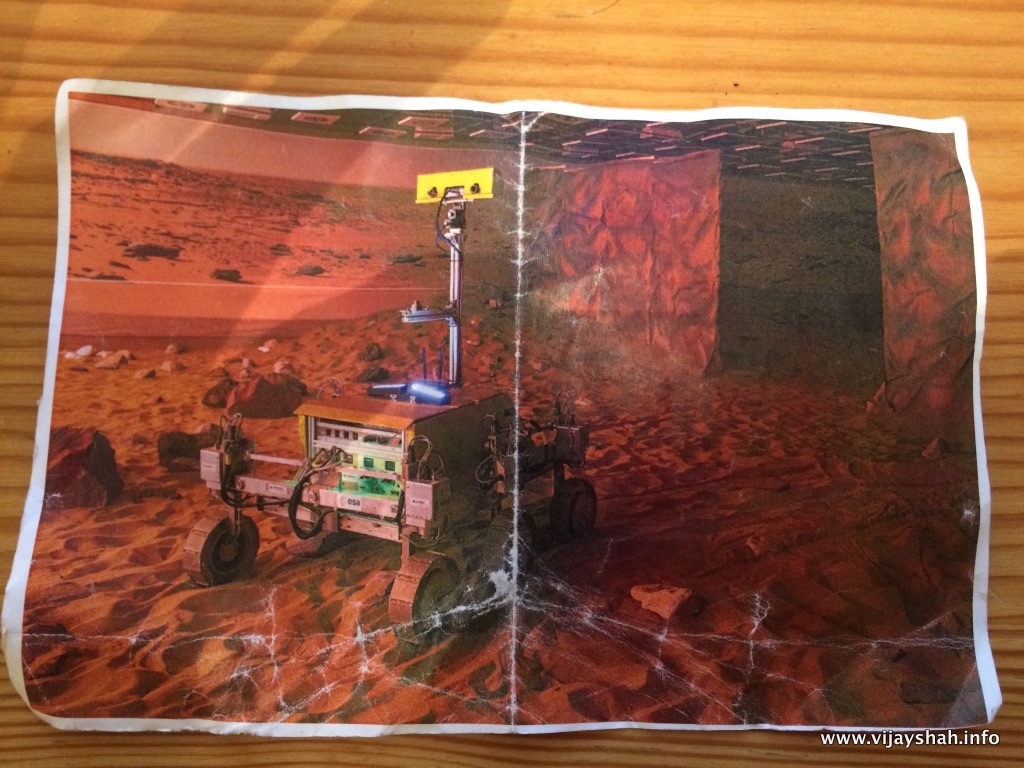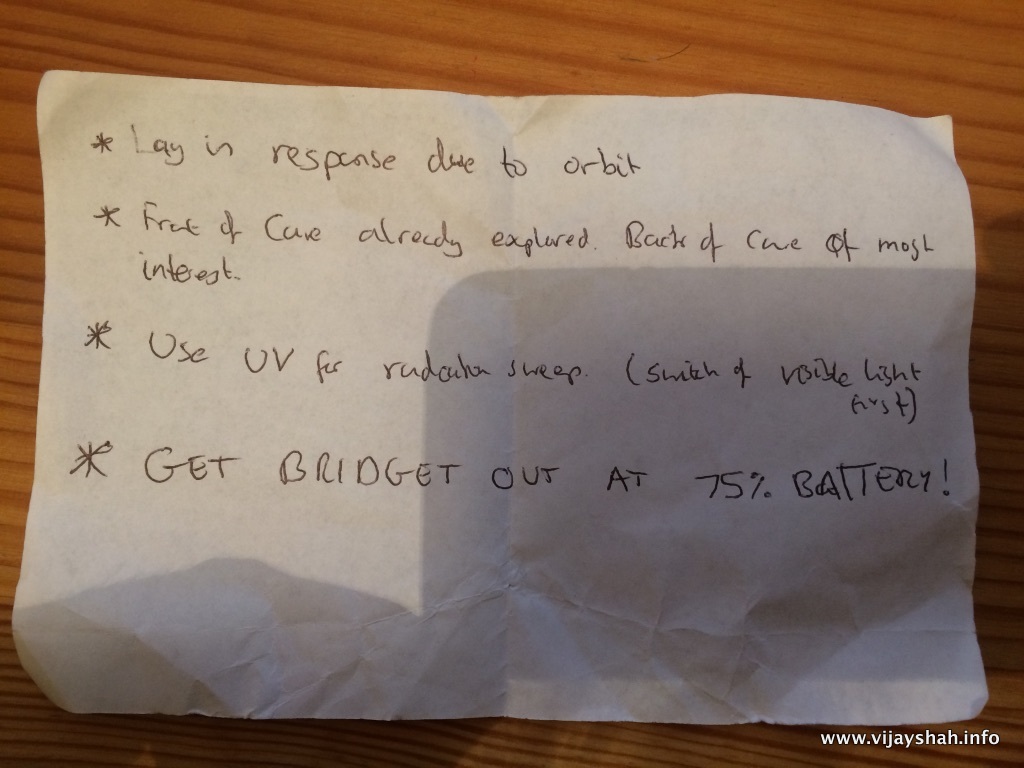The last couple of years I’ve had this deep niggling feeling inside me as I tried to reconcile my passions and work with what I deem most important and whom I aspire to be. It started of as that slight nagging feeling that we’ve all felt at some point, like a caught zip or sunglasses in long hair, but the zip didn’t free itself and the sunglasses became too entangled until it could no longer be ignored. There was only one solution: to change.
ASTRONAUTS: WHY THE FUTURE MUST HAVE WINGS
**SPOILER ALERT** If you haven’t seen it yet, watch Astronauts: Do You Have What It Takes? Episode 4 on iPlayer first.
One of the tests that we were given was to present to the panel on a topic of space exploration. Being an aerospace engineer my talk was on a topic that has fascinated me since childhood: Access into Space.
Why The Future Must Have Wings
The hardest part of space travel in our near solar system is getting into space in the first place; out of our atmosphere.
So far the only way we have reached orbital spaceflight is by rockets and these, on the whole, are inefficient, expensive and unreliable.
In comparison, aircraft are very efficient, reusable and for anyone who has flown half way across the world on holiday, incredibly affordable.
In order to understand the difference between these two technologies that have developed over a similar timeframe we really need to understand how a rocket engine works:
· A rocket engine operates under the same principle of if release a blown up balloon. By accelerating a large amount of gas out of the back, an equal and opposite force is imparted onto the rocket pushing it upwards, as described by Newton’s third law of motion.
· The rocket is generating these hot, compressed gases internally through combustion. For any combustion be it a rocket or a campfire, you need three things: a fuel source, an oxygen source and a heat source. The rocket carries all of these components on board with it in stored energy and as a result becomes extremely heavy. This is evident when we see that the oxidiser is six times heavier than the fuel source!
· But this does give it one big advantage, the rocket can operate in the vacuum of space but must result in expending it’s stages as it goes up to reduce mass. And the atmosphere is just a hindrance.
In comparison, the airliner doesn’t see the atmosphere as a disadvantage but uses it beneficially in three different ways:
1. The atmosphere provides the aerodynamic lift on the wings providing the upwards force opposing gravity.
2. Instead of carrying the oxygen with it, the jet engine uses the oxygen in our atmosphere for combustion, and
3. Crucially the jet engines use the air as the working fluid or propellant. The big fans and compressors, suck the air in, compress it, heat it up in the combustion chamber and accelerate it out the back creating the equal and opposite force pushing the aircraft forward.
A much more elegant and efficient solution. Clearly the future of space access must our atmosphere as a benefit rather than always seeing it as a hindrance.
That’s why there is a lot of interest in developing single-stage-to-orbit spaceplanes.
A spaceplane takes off and lands just like an aircraft and uses an air-breathing engine and wings to climb to the upper reaches of our atmosphere travelling at Mach 5, or five times the speed of sound. As the air becomes too thin for the air-breathing engine, the intakes close off and it switches to a rocket engine, accelerating to Mach 25, for the last and final push into orbit.
Now imagine this, as our single stage to orbit vehicle hasn’t jettisoned it’s fuel tanks on its way to orbit, as soon as we reach orbit we have many more options open to us: We can refuel the spaceplane with a conveniently placed orbital refuelling station giving it enough fuel to gently pop over to the moon for a supply trip or a tourism visit and after a few days it will coast back to Earth and re-enter the Earth’s atmosphere. But the benefits don't just stop there, with the much superior re-entry characteristics the spaceplane offers it can land on one of several runways around the world and after a quick check over, a refuel, it is ready to go again. Completely reusable.
And that is why the future must have wings.
Astronauts: Do You Have What It Takes? Episode 5 is on Sunday 24th September at 8pm BBC2.
ASTRONAUTS: That Darn Rover!
**SPOILER ALERT** If you haven’t seen it yet, watch Astronauts: Do You Have What It Takes? Episode 2 on iPlayer first.
It’s pretty incredible to think that we have had not one but two rovers on Mars, exploring the surface of the planet, sending us back scientific data like never before. Both Spirit and Opportunity arrived on the red planet in 2004 and over a decade later Opportunity is still roving! Controlling the rovers though happens at NASA but the time it takes to send a signal to Mars is an average 13 minutes. So to send a command to the rover and for it to respond to you would take about half an hour which would be a pretty slow conversation.
This was the premise of the test where we had to control the rover ‘Bridget’. The scenario was that at some point in the future we may have a human crew orbiting Mars, just like the International Space Station orbits Earth. In order to find suitable places to land or to explore before sending astronauts down it makes sense to send a rover, Bridget, to determine which places are the best. Like NASA’s Spirit and Opportunity rovers, Bridget is also powered by batteries which are charged by solar panels. Going into a cave is thus incredibly dangerous for a rover because if the batteries deplete whilst still in there the rover is lost forever. On the flip side, caves are incredibly attractive if humans are to visit Mars as they would offer a natural protection against dangerous solar radiation.
By controlling the rover from orbit around Mars instead of from Earth it would be possible to control the rovers in close to real time and that is exactly the training that UK astronaut Tim Peake did in 2016. From the ISS in low earth orbit he controlled Bridget, on Earth, using the same setup as we had. It is amazing to think that this was exactly what astronauts are training for (click here).
The test was to discover parts of the cave that were of most interest, as it so happened, the most interesting parts of the cave were right at the back, the farthest away from the entrance! But also, just like in orbit, there will be a delay in the signal, making controlling Bridget somewhat difficult. I still have my notes from our initial group briefing.
The last point was the basis of my own tactic. Not knowing how easy it was to control with the lag in the response time and the fact that it was a very slow moving rover, 4cm per minute, I wanted to make sure there was sufficient time to get Bridget out of the cave. As I soon found out, my strategy of finding the targets was poor but by enacting my retreat at 75% battery I overcame a moment when I really thought I would lose the rover, and by doing the slowest three point turn in the solar system I got her out of the cave, just in the nick of time.
Everyone that sent Bridget into the cave had to change their plan to what they discovered, especially as not all of the information we were given was accurate. Those plans that had a lot of manoeuvres suffered the most from dealing with the delayed response. The best plans though used all of Bridget’s tools to the maximum. It turned out that the UV light is actually quite powerful and so you didn’t need to get right to the back of the cave to spot the targets! Both James A and Jackie figured this out quite early on and as a result did extremely well. James A, though, didn’t even have to worry about hitting any obstacles on the way out as he just followed his own tracks back out. Genius!
Episode 3 of ‘Astronauts: Do You Have What It Takes?’ airs BBC 2 at 9pm on Sunday 3rd September.
ASTRONAUTS: DO YOU HAVE WHAT IT TAKES?
I must admit, as soon as I hear that word, ‘astronaut’, my ears prick up and I’m searching around for whoever said it. I’ve always wanted to be an astronaut and I’m in awe of those that have managed to leave the confines of our atmosphere and unshackled from the bonds of gravity float freely outside of this world.
So when I saw an advert from the BBC requesting participants to go through a psuedo-astronaut training and selection programme run by Chris Hadfield, a 20 year veteran of NASA, I jumped at the opportunity. It could be the closest I ever get to experience being an astronaut and here's why...
Quite literary and within the margins of error everyone that has attempted to be an astronaut fails. Not only do you have to be in top notch physical shape (in ways that you will have no idea about), but also must have developed over the preceding decade(s) skill sets that are at the forefront of your chosen field and be ones that are of core requirement for the astronaut corp (which may change!). That requires a lifetime of dedication, hard work and belief. And then, you have to hope that there will be a selection process during those years when you are at your prime!
The last ESA selection process was in 2007-8. During that selection process nearly 10,000 highly skilled applicants from across Europe vied for six places. The odds were pretty slim of making it into the final six and many exceptional candidates didn't. It is the hardest selection process that exists.
But imagine achieving that dream. It would be the ultimate adventure: Imagine seeing the Earth, the most incredible place in the known universe, from the vantage point of orbit. Just that thought leaves me breathless. And so, it’s always been a question I’ve asked myself, do I have what it takes to be an astronaut? Of course, I think I do, but do the experts? What actually do you have to have to be an astronaut?
Fortunately I have had the opportunity to find out. Filming this BBC series putting us through a similar selection process to a real astronaut selection process has been one of the most intense periods of my life. The other candidates are amazing. The stress you see is real and Chris Hadfield and his team made sure it was as realistic as possible.
Episode 1 of ‘Astronauts: Do You Have What It Takes?’ airs BBC 2 at 9pm on Sunday 20th August.
It’s all about the (H)Air
Now that summer’s coming round with a scorching hot Spring all of my ‘warm’ jackets are being put away, to the back of the wardrobe not to be looked at again for six months. A question came to mind: What makes a warm jacket? Why is it warm?
I know the answer to this question, having thought about a lot over the years, but I was curious as to whether other people did. Even asking my engineer friends, who pride themselves in knowing how things work, what actually made a jacket warm it did stump them for a few seconds presenting me with a look of bemusement as their minds churned away.
Clothing, be it big, warm jackets in the winter to just a light covering in the summer, is absolutely crucial for our survival. Think about if clothing was never invented, ignoring the fact that we wouldn’t ever have made it out of Africa and assuming we were all comfortable seeing each other in the nude. Popping out even on a summer’s day in the buff sends shivers down my spine just thinking about it and imagine going to a British beach without a wind jacket...brrrr!!
Isn’t it bizarre that despite how crucial clothing is for our survival, for our success in inhabiting large portions of the world, that we rarely give it a second thought about why these materials keep us warm? About why certain materials work better than others? We just know it.
So why do I know about this topic? Because I have gotten cold, very cold! In 2008, during our first attempt to cross the Penny Ice Cap on Canada’s Baffin Island in early spring conditions my feet became so cold they turned blue and were completely numb. It was apparent that to continue on the expedition was to seriously risk my feet or worse and so with no real choice at hand we had to back off the expedition. It was a massive blow back then, an expedition a year in the planning, ruined.
The most curious thing though, was that my team mate, Antony, and I were wearing almost identical clothing. Everything down to our boots was the same and brand new. Antony’s feet were fine. “Warm and toasty” he said. I had no idea why my feet got cold.
Three years later I figured it out. It was the simple fact of my boots being too small. It’s amazing how the best laid plans went awry due to just the simplest of errors. We went back attempting the crossing again in 2011. This time, despite the same brand and model of boots, I wore a size bigger. My feet were fine, more than fine, they were as happy as Larry.
‘Ah, yes of course’ we say to ourselves. ‘Can’t have boots that are too small.’ But why? What is the science behind this? The answer is all around us. Air.
Air is the best* abundant source of insulating material. It’s also free, something nature has found out long ago. Our hair, an animal’s fur and bird’s feathers primary purpose is to trap air. By trapping a good layer of air between your warm body and the cold harsh world, the smaller the heat transfer, the warmer you will be.
The polar bear has even gone one step further; each of their hair is actually hollow allowing air to be trapped within each strand as well as between the individual hairs improving the insulating properties. On top of hollow hairs, the sea otter, with no blubber to keep it warm, relies on the densest fur in the animal kingdom allowing air to be trapped within its fur whilst spending prolonged periods in the water. It’s all about trapping air.
That’s why when there is a wind blowing at you; through your hair, or you’ve dunked your head in a bucket of water**, destroying that trapped layer of insulating air; you lose a lot of heat.
That is exactly how our warm jackets work, be it stuffed with goose feathers or high-tech synthetic fibres. The design of the feathers is optimum to trap as much air in the lightest and smallest structure. Cover these wonderful feathers/fibres in a windproof or even waterproof shell and you’ve got yourself a jacket to rival nature’s best inventions.
So what happened when my boots were too small? My toes pressed up against the front of the boot, squashed the fluffy fibres of my socks and destroyed the trapped air that would otherwise have provided a heat barrier. Instead what I was left with was a direct and solid conduction path to the -35C exterior sucking away my heat. They had no hope.
Next: How do wetsuits keep you warm?
* - the best actually would be a vacuum such as that you find in your Thermos flask but those are pretty difficult and expensive to create and not very practical to be wearing.
** - water in your hair also creates greater heat transfer by evaporation, but that's something for another day...






